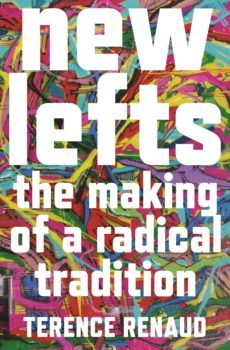As readers may have noticed, I have a habit of writing about the New Left in a derogatory way.
I complain about its bad habits. I lament its navel gazing, its development of alienating leftist subculture, and its embrace of open-ended, structureless meetings. And more than anything, I think it’s unfortunate the New Left still influences new activist groups.
So, it’s fair to say I was overdue for a correction from more sober historians.
Never fear, dear reader. That day has arrived!
Renaud on the New Left
For my part, when I talk about the ‘New Left,’ I refer to activist groups and movements of the 1960s and early 1970s. These groups moved away from labor organizing and toward organizing around things like culture, social issues, identity, and anti-colonialism. And in criticizing them, I don’t mean to uplift a particular vision of the ‘Old Left.’ Rather, my sense is that they often went to opposite extremes (anti-labor attitudes in reaction to workerism, lack of coherent structure in reaction to bureaucracy, and so on).
Were this simply some kind of historical accident, it would hardly be a big deal. But I see these things still happening in activist groups of the current day. Millennials and Zoomers criticize ‘Boomers.’ And yet they keep reproducing the same problems and issues Boomers gave to them.
Oh, the irony of it.
However, in his book New Lefts and in a series of podcasts on American Prestige, Terry Renaud paints a much broader historical picture of the New Left. He puts into much better context many of the things I see.
Our Misconceptions
So what do people like me get wrong?
As Renaud puts it, the New Left didn’t begin in the 1960s. It traces all the way back to the 1930s and even 1920s. And it formed as a reaction to the bureaucratic and organizational structures of the Old Left, a left that hit multiple points of crises during and after World War I. In short, the mass social democratic parties of Europe and the union bureaucracies of Europe and the U.S. lost steam. And the New Left formed in reaction to these forces.
Of course, aside from the specific issue of date (1920s vs. 1960s), none of that is new to me. It’s well established that the Old Left angered plenty of people with its narrow focus on a traditional proletariat.
What Renaud adds is the point that, in its earliest versions, the New Left still wholeheartedly embraced the revolutionary project of the Old Left. Its earliest proponents still wanted a basically working-class revolution. But they, much in the way that I do in many posts on this blog, wanted to expand our understanding of workers to get beyond the traditional proletariat. They wanted to create a more open, inclusive working-class politics of the left.
But What Changed?
In its original form, the New Left embraced a project of radical imagination and spontaneity that acted as a productive force. It retained the revolutionary aims of the Old Left while trying to move beyond some of the things that held it back. They maybe even came up with useful kinds of prefigurative politics.
Not bad.
But then came the post-war years, especially into the 1960s. This is where we enter into the kind of politics I’m far more familiar with and take as representative of the New Left.
As Renaud tells the story, the New Left fragmented in these years. People still talked about ‘revolution.’ But that came off as laughable at best. Rather, these groups turned themselves into the 60s caricatures we all know and love.
It’s in this era that it all turned into the kind of individualistic, dead-end politics that, to this day, smacks young activists with its long arm.
A New Left Today?
And so, I learned a few new things about the New Left.
My criticism of the 60s and 70s version of it is still pretty much on target. We’d still do well to reject the organizational forms of the 1960s – its lack of structure, its privileging of open-ended ‘democracy’ over meaningful popular participation, and so on.
But we can learn some lessons from the original New Left. Lessons like the need for an inclusive, expanded notion of the ‘working class.’ Lessons like the need to give people the space to expand who they are and take on leadership roles, the need to open ourselves to people to different religions, races, sexualities, and so on.
Most importantly, Renaud shows us some ways to take away from the New Left the good without the bad.
